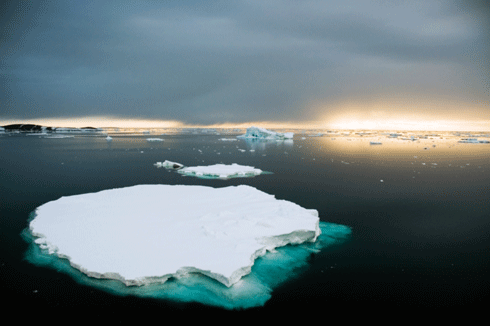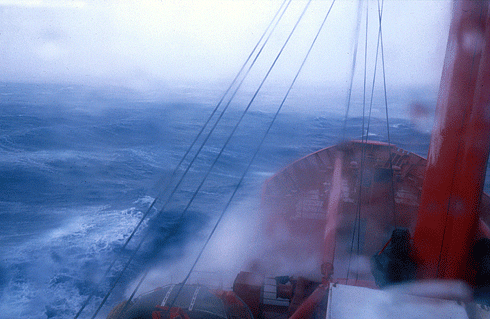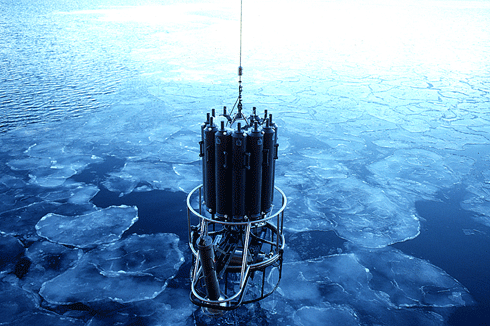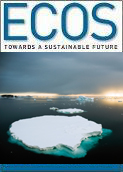
|
Published: 28 May 2013
More or less? Climate change explains ‘the ice conundrum’
Arctic sea ice is disappearing at an unprecedented rate, reaching record lows in September 20121. Yet in Antarctica, the sea ice reached a record high in the same month. Is the expansion of Antarctic sea ice evidence against global warming, as some observers have suggested?

|
|
The dynamics of ice is complex – icebergs, sea ice, land ice, winds and warmer seas all interact in ways that often defy intuition. Credit:
Tanya Patrick/scienceimage
|
Recent studies suggest the answer is no, and that human activities are likely responsible for regional changes in Antarctic ice that rival those in the Arctic.
Summer melt of land ice on the Antarctic Peninsula has increased almost ten-fold in the past 600 years, and is now at its highest level in 1000 years.
According to recent research by Dr Nerilie Abram from the Australian National University, most of that melt has taken place in the past 50 years, providing the first clear demonstration that melting land ice on the Antarctic Peninsula has responded to increasing temperatures during the 20th century.
Dr Abram, who is also part of the British Antarctic Survey, led a team that drilled a 364-metre long ice core from James Ross Island, which lies near the northern tip of the Antarctic Peninsula.
‘When we pulled up the cores we found visible layers of ice where there were no bubbles, indicating that snow had melted and refrozen,’ she explains.
‘We then measured the thickness of these melt layers through the past 1000 years and looked at how much snow melt occurred each year.’
They found that the coolest conditions on the Antarctic Peninsula and the lowest amount of summer melt occurred around 600 years ago, when temperatures were around 1.6°C lower than those of the late 20th Century. At that time, the amount of annual snowfall that melted and refroze was about 0.5 per cent. Today, it is around ten times greater, with as much as 5 per cent of the annual snowfall melting each year.
‘In summer time, if the temperature doesn’t exceed zero degrees, there is no melt. But a very small increase in average temperature can result in a disproportionately large increase in the amount of ice melting,’ says Dr Abram.
In fact, she points out, other parts of the planet exhibit this non-linear response to temperature change. ‘There is a threshold over which there are rapid changes, but we don’t have all of the answers as to why this is.
‘The melting of land ice is an important contributor to sea level rise. Glaciers along the Antarctic Peninsula are uniformly retreating and losing ice to the oceans, and a number of ice shelves have also collapsed. Summer ice melt is implicated in driving much of this destabilisation.
‘Our results are representative of what’s happening on the Antarctic Peninsula, but not the whole continent,’ she cautions.
‘Across much of the continent, away from the coast, summer temperatures are still too cold for melting to occur. The peninsula is much warmer and [extends] into the Southern Ocean, where it is affected by the warm westerly winds that circle around Antarctica.’

|
|
The winds around Antarctica have led to changes in sea-ice and the edges of the Antarctic ice sheet. Credit:
Graham Blight/scienceimage
|
Winds of change
While the Antarctic ice sheet is steadily losing mass, the total area of Antarctic sea ice has been expanding at about 1 per cent per decade since the late 1970s. The expansion of sea ice in the Southern Ocean is in stark contrast to the rapid retreat in the Arctic.
The reasons for the differences in the north and south are not yet fully understood, but recent studies are providing some important clues.
‘Sometimes you hear people suggest that the growth of ice in the Antarctic somehow cancels out the retreat of ice in the Arctic,’ says Dr Steve Rintoul, of CSIRO’s Wealth from the Oceans Flagship and the Antarctic Climate and Ecosystems Cooperative Research Centre.
‘This is not true. The loss of ice in the Arctic is much greater than the increase in the Antarctic. Overall, there is no doubt that the planet is losing ice – both sea ice and glacial ice.’
He says it’s important to appreciate that while the total area of Antarctic sea ice has increased, there are large changes from region to region. ‘West of the Antarctic Peninsula, sea ice has retreated at a similar rate to the Arctic – the ice-free season is now three months longer than it was 30 years ago.
‘In the Ross Sea, south of New Zealand, however, the sea ice has expanded and the sea ice season is now two months longer,’ he explains. The build-up of sea ice can wreak havoc on measurement programs in the Antarctic. This season, Dr Rintoul’s expedition to deploy scientific equipment in an area of the Southern Ocean that used to be reliably ice-free was thwarted by heavy ice.
Despite these local changes, large regional changes in Antarctic sea ice are providing some insights into what drives changes in sea ice and how it might further change in the future.
One factor is a change in the wind.
‘The edge of the sea ice pack expands when the wind blows from south to north, and retreats when the wind blows from the north,’ Dr Rintoul explains, adding that the winds have changed for two reasons, both linked to human activities.
‘The first reason is the ozone hole. Loss of ozone cools the atmosphere at high altitudes over Antarctica, and this drives changes in the winds. The winds blowing over the Southern Ocean have strengthened and shifted to the south in recent decades.
‘The second reason is greenhouse warming. Warming of the atmosphere caused by the increase in greenhouse gases also affects wind patterns over the Southern Ocean.’
A recent study2 has shown that the resulting changes in wind patterns over the Southern Ocean can explain most of the regional changes in Antarctic sea ice.
Another possibility is that melting of glacial ice around the edge of Antarctica might play a role in sea ice expansion.
‘Freshwater is buoyant and stays at the surface, freezing more readily than saltwater,’ explains Dr Rintoul. ‘An increase in meltwater might therefore result in an expansion of sea ice, as shown in a recent modelling study by Dutch scientists3.’
‘The intriguing part of this study is the suggestion that warming of the ocean can paradoxically lead to an increase in sea ice, by melting glaciers around the edge of Antarctica.’
While meltwater may contribute to changing sea ice patterns, it doesn’t seem to explain the regional pattern of sea ice expansion and retreat, so winds are likely to play the dominant role.
Dr Rintoul’s research has revealed another impact of the input of meltwater. Dense water formed around the edge of Antarctica, known as Antarctic Bottom Water, is an important part of a global-scale pattern of ocean currents that regulates climate.
‘We have observed pretty dramatic changes in Antarctic Bottom Water. It has become warmer, fresher, and less dense. South of Australia, the volume of dense bottom water has contracted by 50 per cent since 1970.
‘While more work needs to be done, we believe that increases in meltwater are likely driving the changes in bottom water. Additional input of meltwater dilutes the water around the continent, making it less salty and less dense, and ultimately reducing the volume of dense water.’
Understanding how and why the ocean is changing is critical for studies of climate change, he says. ‘The oceans influence the rate of climate change by soaking up vast amounts of heat and carbon dioxide from the atmosphere.
‘When we talk about global warming, we really mean ocean warming – about 93 per cent of the extra heat stored by the Earth over the last 50 years is found in the ocean.
‘To track the evolution of climate change, we need to continue to measure the oceans. In particular, we need to know if the ability of the ocean to absorb heat and carbon dioxide will change in the future.’
1 WMO on the status of the global climate in 2012
2 Holland P and Kwok R (2012) Wind-driven trends in Antarctic sea-ice drift, Nature Geoscience 1627
3 R. Bintanja et al. (2013) Important role for ocean warming and increased ice-shelf melt in Antarctic sea-ice expansion, Nature Geoscience 6, 376–379




